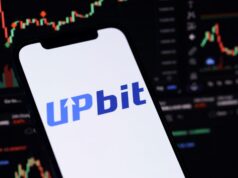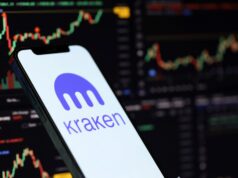Binance has launched its Community Co-Governance Mechanism in a bold step toward decentralization. It empowers users to vote on which tokens should be listed, or delisted, from the platform. The dual-track initiative, “Vote to List” and “Vote to Delist,” reflects the exchange’s move to enhance transparency and community engagement amid growing scrutiny over centralized decision-making in the cryptocurrency industry.
First Vote Targets Four Tokens
The program debuted on March 21, 2025, with a pilot delisting vote featuring four tokens currently in Binance’s Monitoring Zone: Aergo (AERGO), AirSwap (AST), BurgerCities (BURGER), and Linear Finance (LINA). According to Binance’s official announcement, a fifth token, COMBO, will be delisted directly without a vote due to concerns tied to the project’s status.
Users holding at least 0.01 BNB in their master accounts are eligible to participate in the vote. The voting period runs for seven days, with each user’s vote weighted according to the amount of BNB held. The token receiving the most votes for removal will be delisted from Binance on March 28, 2025, at 06:00 UTC.
Binance emphasized that the delisting vote applies only to tokens in the Monitoring Zone. These projects meet one or more risk flags, such as inactivity, poor communication, failure to submit development updates, or potential security and compliance concerns.
Vote to List: A Parallel Track
While “Vote to Delist” focuses on problematic tokens, the “Vote to List” track allows BNB holders to propose and vote for new token listings. Projects that have completed their Token Generation Event (TGE) but are not yet in Binance’s Alpha Observation Zone can apply to enter the voting pool. The project that garners the most votes may be listed if it passes Binance’s due diligence.
This structure marks a shift from Binance’s previously centralized listing process. The exchange now offers multiple listing channels, including Launchpool, Megadrop, HODLer Airdrops, Direct Spot Listings, and now, community voting. According to Binance, this multi-pronged approach aims to improve valuation mechanisms, ensure more equitable token distribution, and align project incentives with community interests.
>>> Read more: SEC Binance Pause: A Surprising Turn in Legal Standoff
A Strategic Move Amid Market Pressures
Binance’s move comes amid increasing industry pressure to decentralize decision-making and improve accountability in token management. Over the years, centralized exchanges have faced criticism for opaque listing and delisting criteria. Sometimes they have been accused of favoring well-funded projects or responding to external pressures without user input.
By launching this governance initiative, Binance is signaling a shift toward community involvement. At the same time, it offloads part of the reputational burden of listing decisions onto its users. However, this also introduces new risks and challenges.
Implications for Projects and Investors
The public vote mechanism adds a new layer of reputational risk for token teams. Tokens placed in the Monitoring Zone may suffer loss of investor confidence, especially if the community selects them for delisting. Even if a project survives the vote, its mere presence in the Monitoring Zone could trigger negative price reactions, reputational damage, or capital flight.
On the other hand, projects seeking listing must now consider community engagement as a core strategy. It is no longer enough to meet technical criteria. In the future, garnering grassroots support from BNB holders could determine a project’s ability to access Binance’s vast liquidity.
For investors, the mechanism provides transparency and influence – but also volatility. Community-driven decisions may not always align with objective fundamentals. Popularity contests, social media campaigns, or manipulative tactics could influence vote outcomes, raising questions about governance integrity.
A First Step Toward Exchange Decentralization?
While Binance’s governance system remains a curated and permissioned model, it represents a significant experiment in user engagement. Critics may argue it’s more symbolic than structural as Binance retains final authority over listings, especially in cases involving legal, security, or compliance issues. Still, the initiative marks a notable departure from traditional top-down processes used by centralized exchanges.
>>> Read more: Binance.US USD Services Reinstated After Suspension
Whether this experiment scales or evolves into something more autonomous remains to be seen. For now, Binance has opened the door for its users to shape the trading environment in real time. It’s an innovation that could ripple across the centralized exchange space.
Readers’ frequently asked questions
What is the Binance Monitoring Zone and how does a token end up there?
The Monitoring Zone is a classification Binance uses for tokens that may not meet the platform’s listing standards. A token is placed there if it shows signs of risk, such as low development activity, poor communication from the project team, small or inactive communities, delays in providing regular reports, or issues with token supply and distribution. Placement in the Monitoring Zone doesn’t automatically mean a token will be delisted. However, it does signal that Binance is keeping a close eye on the project. If concerns persist, the token could become a candidate in the “Vote to Delist” process, where users decide whether it should remain on the exchange.
If a token gets voted for delisting, what happens to the user’s funds and their ability to trade it?
When a token is delisted after a vote, Binance usually announces the specific timeline for suspending trading and withdrawals. Users can still access their funds for a short period, but after the withdrawal deadline, the token may no longer be available for trading or transfer on Binance. It’s important for users holding the token to act before the final deadline. Either convert it to another asset or withdraw it to a private wallet or another exchange that still supports it. The asset’s value may also fluctuate heavily once a delisting is announced or confirmed by a community vote.
Can anyone vote in the listing and delisting process, or is it limited to certain users?
Voting is open to users who hold at least 0.01 BNB (Binance Coin) in their master account, a primary account on Binance used for trading and storing assets. It’s not enough to just have a Binance account. You must meet the minimum BNB requirement and ensure the tokens are in the right wallet within your account. This requirement helps prevent spam or manipulation from users with little stake in the ecosystem. Additionally, Binance does not allow bots or third-party services to vote on behalf of users. Any suspected vote manipulation could lead to disqualification of the results or penalties.
What Is In It For You? Action Items You Might Want to Consider
Keep an Eye on the Monitoring Zone Tokens
If you’re holding assets like AERGO, AST, BURGER, or LINA, now’s the time to reassess your position. With the community voting on their potential delisting, consider whether it’s worth holding through the uncertainty, or if it might be wiser to exit while liquidity is still high. Delistings can hit price and accessibility hard.
Hold at Least 0.01 BNB If You Want a Say
Want to help shape which tokens stay or go? Make sure you’ve got at least 0.01 BNB in your Binance master account. That small amount is your ticket to participate in community votes and potentially influence listings that could affect your portfolio down the line.
Watch for Listing Vote Opportunities to Catch Rising Projects Early
The “Vote to List” mechanism could become a signal for breakout tokens. Keep tabs on the projects applying for listing. These may gain traction fast if they win community support and pass Binance’s review. Getting in early on a soon-to-be-listed asset could offer a solid upside if you pay attention.










